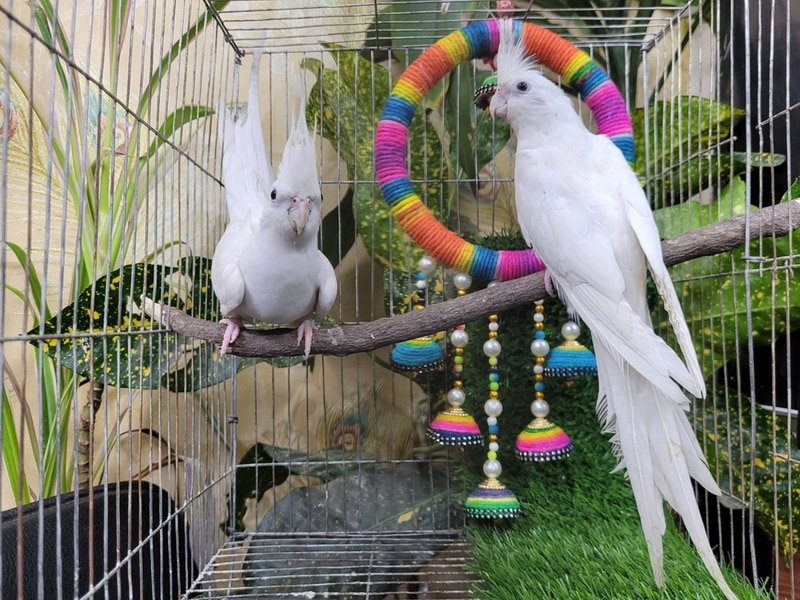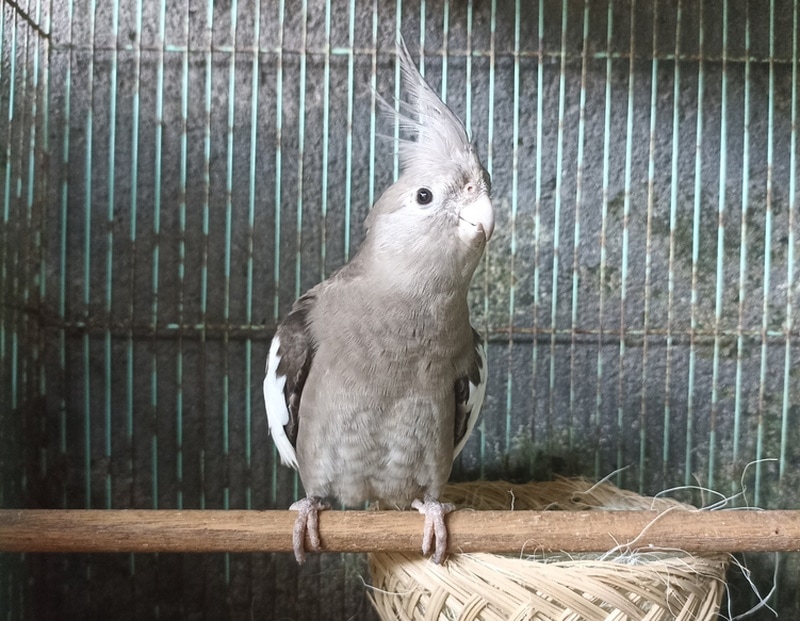12 Types of Cockatiels (With Pictures)
Updated on
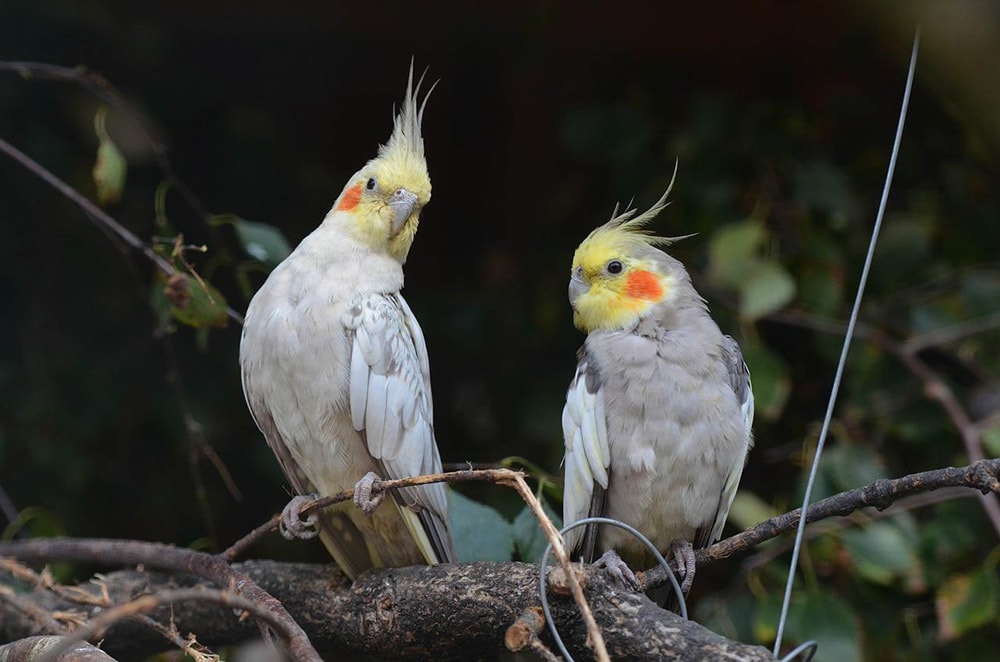
There are only one species of cockatiel, but they come in a palette of vibrant and stunning colors. These colors are also known as mutations, and there are many different mutations you may stumble across as you begin researching cockatiels. Both male and female cockatiels have been bred based on their color characteristics, so there is a much larger variety of color mutations today than there used to be.
If you’re considering adopting a cockatiel but want to know what color options you may have, keep reading. We will review some of the most common color mutations so you can choose the one you prefer.
Top 12 Types of Cockatiels:
1. Normal (Gray) Cockatiel
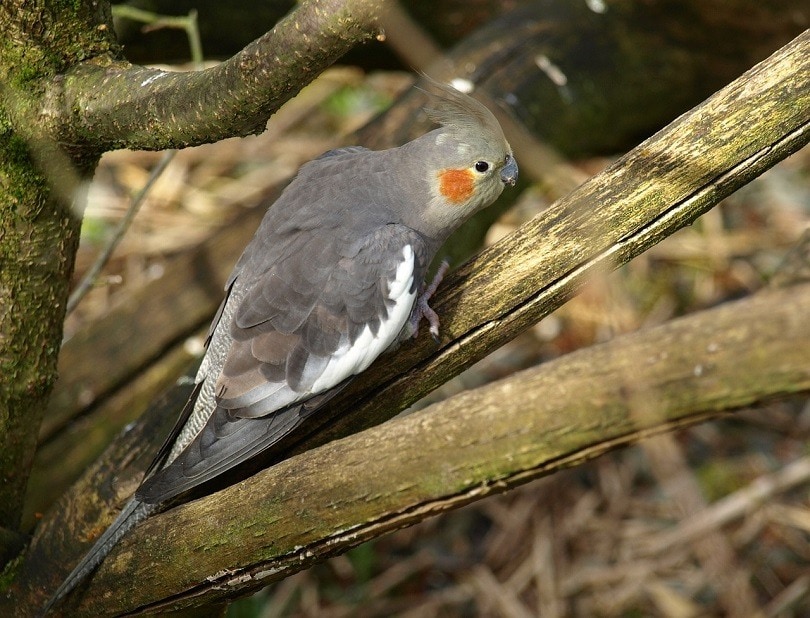
The color of a “normal” cockatiel is mostly gray. Grey Cockatiels will have white on their wings and orange on their cheeks, but their body is predominantly gray. Males often have a yellow head, while females sometimes have yellow flecking on theirs. Both genders will have white barring on their wings, though males sometimes lose this as they age.
This is the most common color mutation.
2. Pearl Cockatiel
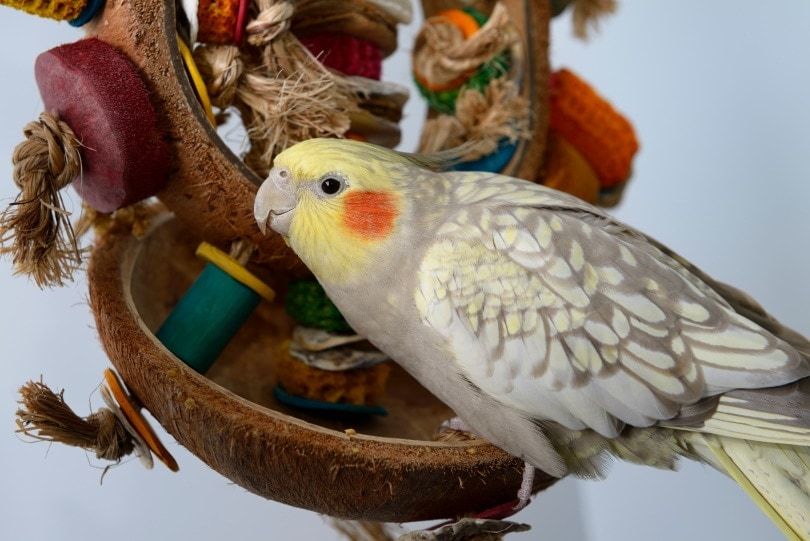
Pearl cockatiels have a beautiful, unique pattern of white spots throughout their body, head, and wings. These spots are known as “pearls.” Males will lose most of these pearls during their first molt, while females tend to retain them throughout life.
Pearl cockatiels have bright orange cheeks and may have some yellowing on their face.
3. Lutino Cockatiel
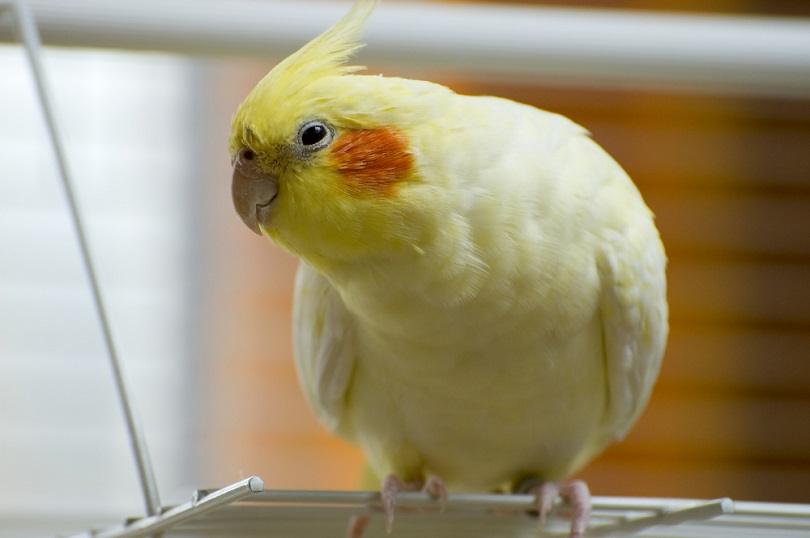
Lutino cockatiels have a genetic mutation that affects their ability to produce gray pigment, resulting in only their orange and yellowing pigmentation. Lutinos have a yellow-white appearance with their trademark orange cheeks, and their eyes are red.
Lutino cockatiels were the second cockatiel mutation to be established in America. Since breeders developed this coloration, Lutinos are not found in the wild.
4. Whiteface Cockatiel
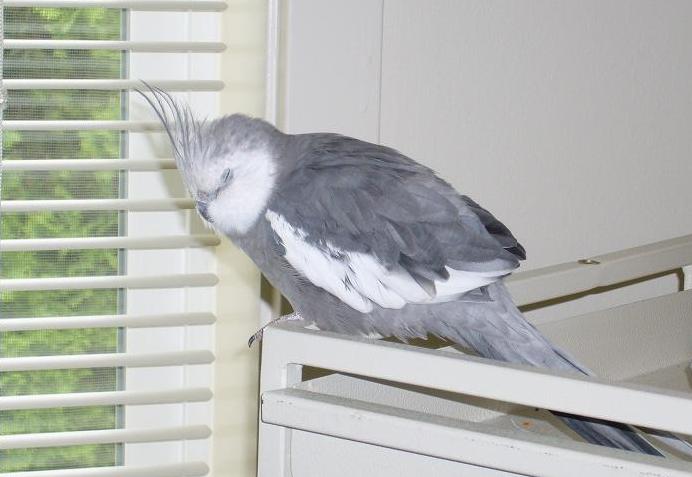
Whiteface cockatiels are the opposite of Lutinos. They do not produce carotenoids which causes an apparent lack of orange and yellow pigmentation. As a result, whiteface cockatiels are solid white with streaks of gray. Whitefaces will have a muted and dull white, whereas other cockatiels have yellow or orange. Males have white heads with gray markings, while females typically have a completely gray face.
White-faced cockatiels are the rarest and most expensive to adopt.
5. Albino Cockatiel
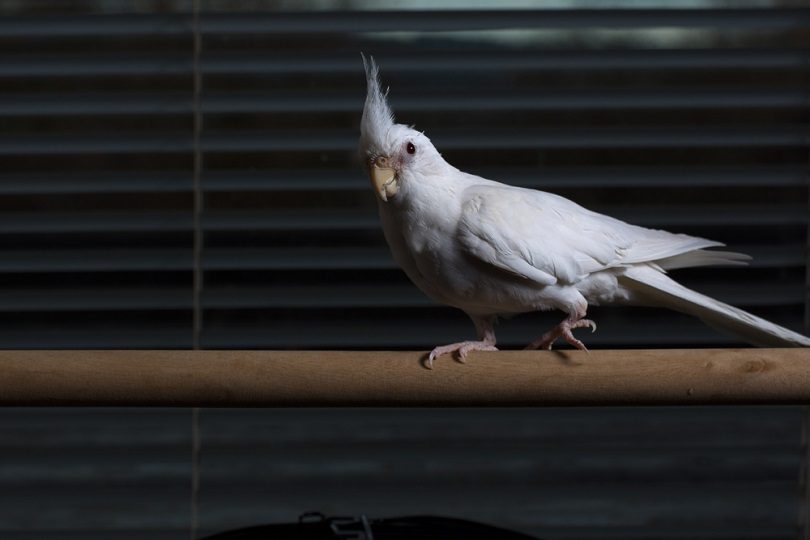
Albino cockatiels combine traits of both Lutino and Whiteface mutations. Albinos have no pigment whatsoever and are entirely white. Because they do not produce melanin, their eyes are red. Both sexes look identical in adulthood at first glance, but females have a barring on the underside of their wings.
Technically, no cockatiel is considered a “true albino” as the mutation that causes albinism does not occur in cockatiels. Instead, it’s more accurate to refer to birds with this mutation as white-faced Lutinos.
6. Pied Cockatiel
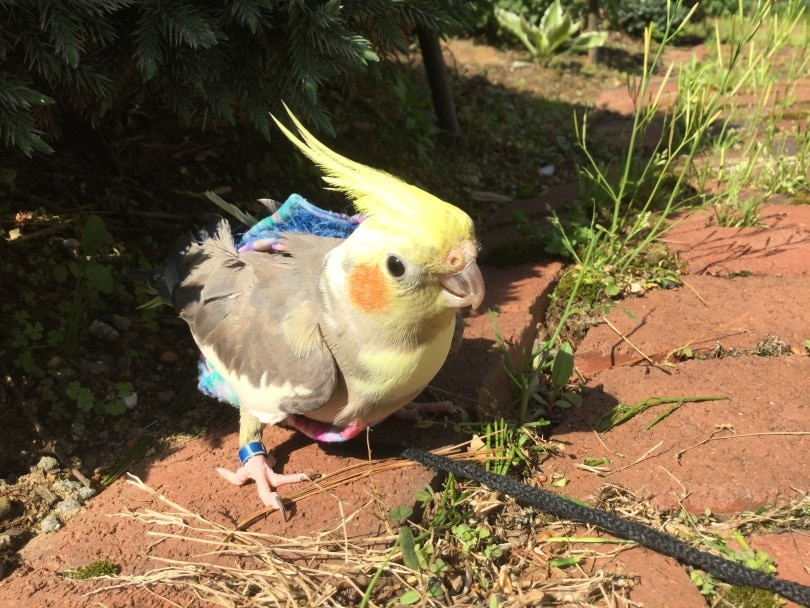
Pied cockatiels have patches throughout their bodies where pigmentation is not present, thanks to a recessive gene mutation. No two pied cockatiels are identical as the patches without coloring will vary from bird to bird. They have darker eyes and lighter legs than other types of cockatiels.
Pied cockatiels with just one copy of the pied gene typically have stray white or yellow feathers in certain spots. They may also have one single lighter-colored nail or wing feather.
7. Yellowface Cockatiel
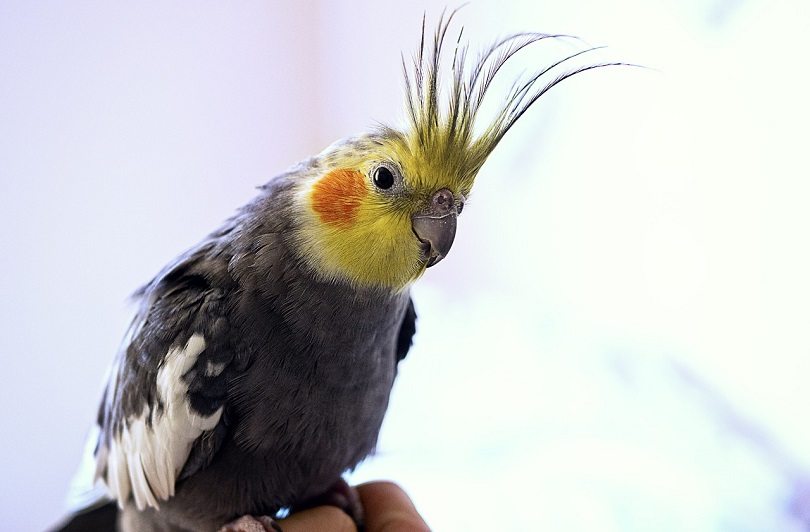
Unlike many other color mutations, Yellowface cockatiels will have yellow on their cheeks instead of the traditional orange. This is one of the most recently developed mutations to be established.
Yellowfaces look very similar to normal gray cockatiels except for the lack of an orange cheek patch.
8. Cinnamon Cockatiel
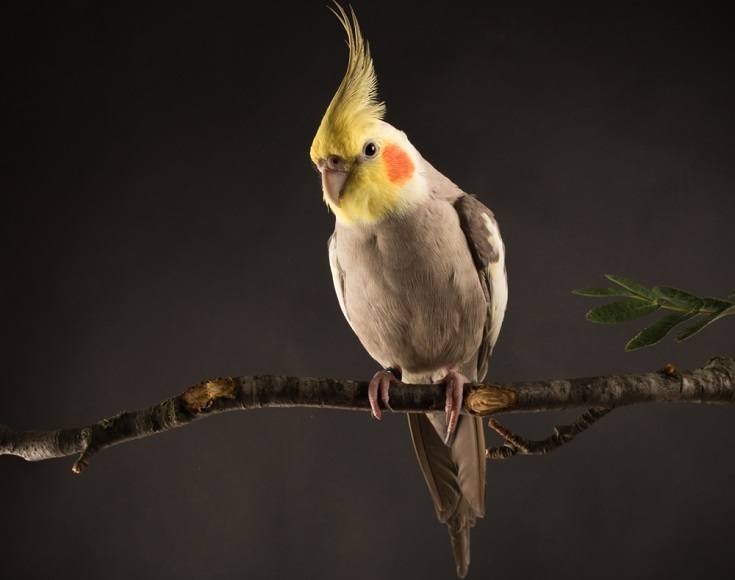
Instead of having the typical gray body, Cinnamon cockatiels have a brown color that produces a muted look. Males have a bright yellow mask and orange cheeks, while females have dulled cheek patches and no yellowing on their faces at all. Females may also have white or yellow tail feathers.
Cinnamon cockatiels also come in pied, pearl, and pearl-pied varieties.
9. Silver Cockatiel
Silver is a complicated color mutation. There are two different types of silver—dominant or recessive.
Recessive silvers have a light silvery color similar to a standard gray except they have red eyes.
Dominant silvers are either double or single factors, depending on how many genes were inherited from their parents. Double factors have a lighter coloration than single factors. Like their recessive counterpart, Dominant silvers have a light silver color, but they also have a dark gray area on the top of their heads.
10. Fallow Cockatiel
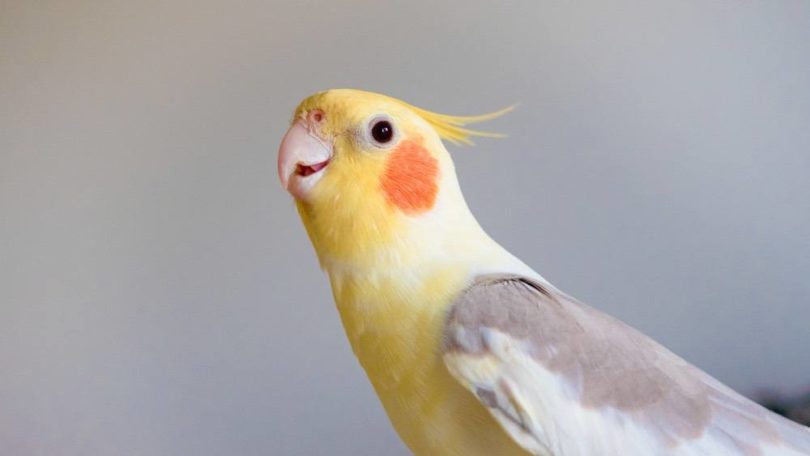
Fallow cockatiels look almost identical to cinnamon cockatiels and are virtually impossible to tell one apart from the other unless they’re side-by-side. Fallows have the same dusty brown coloring but lean more toward yellow than brown like the Cinnamon cockatiel.
The most significant difference is that Fallows have deep red eyes.
11. Emerald/Olive Cockatiel
Emerald is a very rare cockatiel mutation you are unlikely to find outside a breeder’s aviary or bird shows. These birds have a pale gray color with a yellow tinge that gives them a slightly greenish tone. This greenish color comes from a dilute gene that reduces the amount of melanin the cockatiel can produce.
There are many variations in the shade of green. Some have a very pale coloring, while others have more of a dark olive color. They have a distinctive scalloped pattern in their feathers.
12. Blue Cockatiel
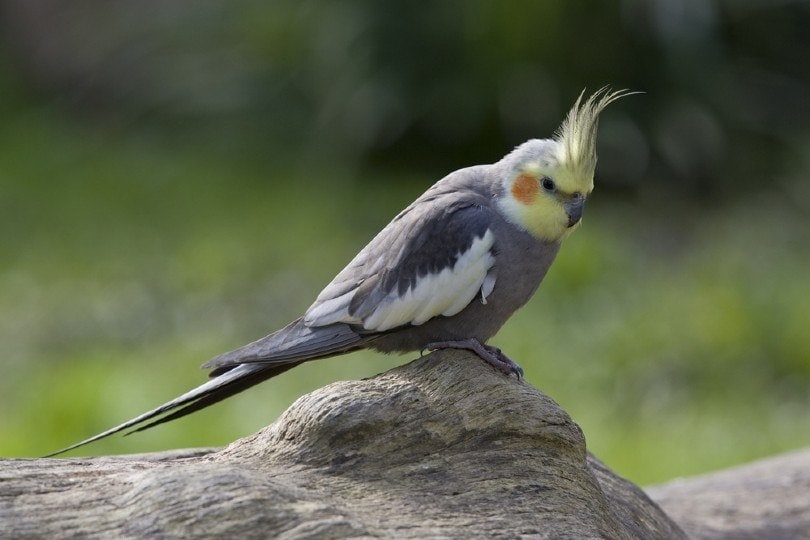
Blue is another extremely rare coloration to find in cockatiels. Blue cockatiels aren’t blue at all but have white plumage with dark gray or black markings on their wings. They have a blueish-gray tinge on their tails. Blue cockatiels do not have cheek patches or yellow coloring on their heads.
Final Thoughts
There are many different color mutations to choose from when searching for the perfect cockatiel to adopt. Remember, regardless of coloration, cockatiels are all of the same species, meaning they have the same care and health requirements. The only difference between the mutations is their appearance and the price you’ll have to pay to adopt them. Rarer colorations, such as white-faced or blue cockatiels, will be pricier to adopt, especially if you’re going through a breeder.
Related Reads:
Featured Image Credit: Katrin B., Pixabay

